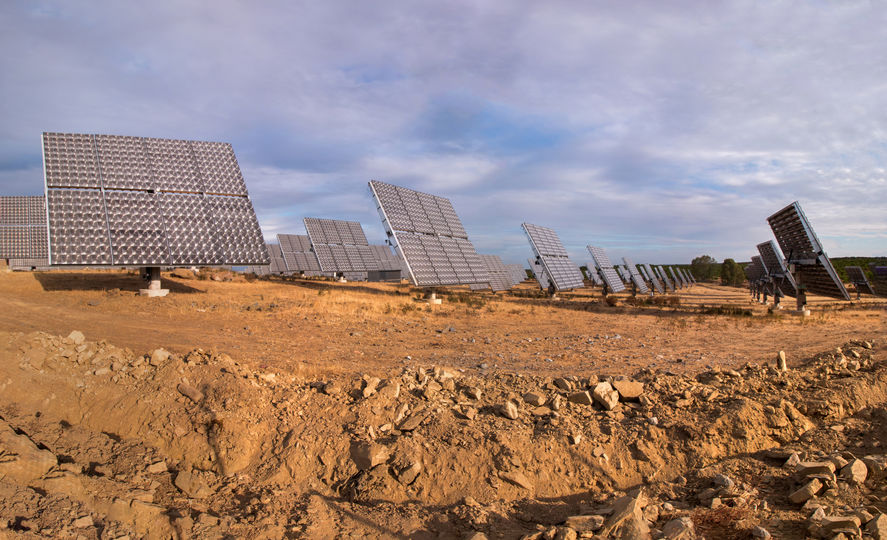For decades, the solar industry benefited from generous federal, state, and local subsidies to increase its footprint. Yet these generous subsidies ignore the costs of disposal of solar panel waste.
Things may be changing. In May 2018, Michael Shellenberger, a Time Magazine “Hero of the Environment” and Green Book Award Winner, wrote in Forbes that the problem of solar panel disposal will explode with full force in two or three decades and wreck the environment because it is a huge amount of waste which is not easy to recycle.
Shellenberger was citing comments, published in the South China Morning Post, from Chinese solar expert Tian Min, general manager of Nanjing Fangrun Materials, a recycling company in Jiangsu province that collects retired solar panels. Tian called his country’s solar power industry “a ticking time bomb.”
This is not really news. The Associated Press had reported in 2013 that the heavily subsidized solar industry was creating millions of pounds of polluted sludge and contaminated water that is often shipped landfills often hundreds of miles away.
The now-defunct, bankrupted Solyndra used its $535 million in guaranteed federal dollars to generate about 12.5 million pounds of hazardous waste, much of which was carcinogenic cadmium-contaminated waste, during its four years of operations.
But, you say, solar energy is clean, green, and mean – and taking over the world one massive array at a time. Isn’t that what we have all been told?
The truth can be brutal. The average lifespan of a solar panel is about 20 years, but high temperatures (as in the Mojave Desert) can accelerate the aging process for solar cells, and snow, dust, and other natural events (tornadoes, earthquakes),can cause material fatigue on the surface and in the internal electric circuits – gradually reducing the panel’s power output.
Solar panels generate 300 times more toxic waste per unit of energy than nuclear power plants. They also contain lead, cadmium, and other toxic (even carcinogenic) chemicals that cannot be removed without breaking apart the entire panel. Worse, rainwater can wash many of these toxics out of the fragments of solar modules over time.
Another real concern is the vast increase in the use of nitrogen trifluoride (NF3) in the construction of solar panels – up 1,057 percent over the past 25 years. The UN Intergovernmental Panel on Climate Change deems NF3 to be 17,200 times more potent than carbon dioxide as a greenhouse gas – meaning that even relatively minor quantities can have major impacts.
While the European Union has long required solar panel manufacturers to collect and dispose of solar waste, in the U.S. until very recently only Washington State had any recycling requirements. Yet even their standards did not address costs.
Proponents like to cite the small size of the industry to date as a reason to ignore recycling requirements and costs in their business plans. But the deeper truth is that the costs for solar waste disposal can be huge. As Cara Libby, senior technical leader of solar energy at the Electric Power Research Institute (EPRI), put it, “I’ve heard that [recycling] will have to be mandated because it won’t ever be economical.”
Japan is also facing a growing solar waste problem. In a November 2016 article, Osamu Tomioka stated that Japanese solar panel waste will likely grow from the current 10,000 tons a year to 800,000 tons a year – and that just to recycle all of the waste produced through 2020 will take 19 years. How long will it take, and at what cost, to recycle 80 times that amount?
A 2018 report from the Institute of Energy Research suggests imposing a recycling fee on solar panel purchases. A federal disposal and decommissioning fund would then dispense funds to state and local governments to help pay for removal and recycling or long-term storage of solar panel waste. [Similar fees help recover costs for nuclear waste disposal and coal mine reclamation for bankrupt facilities.]
But how much of a fee would be needed? IER admits that recycling costs are generally more than the economic value of the materials they recover. And bankruptcies have been all too common in an industry that has relied so heavily on disappearing subsidies.
The simple truth is that it is past time for a real accounting of the overall costs to the public and to the environment of a massive increase in the use of solar panels as compared, for example, of increased reliance on non-intermittent technologies like nuclear energy and natural gas.
